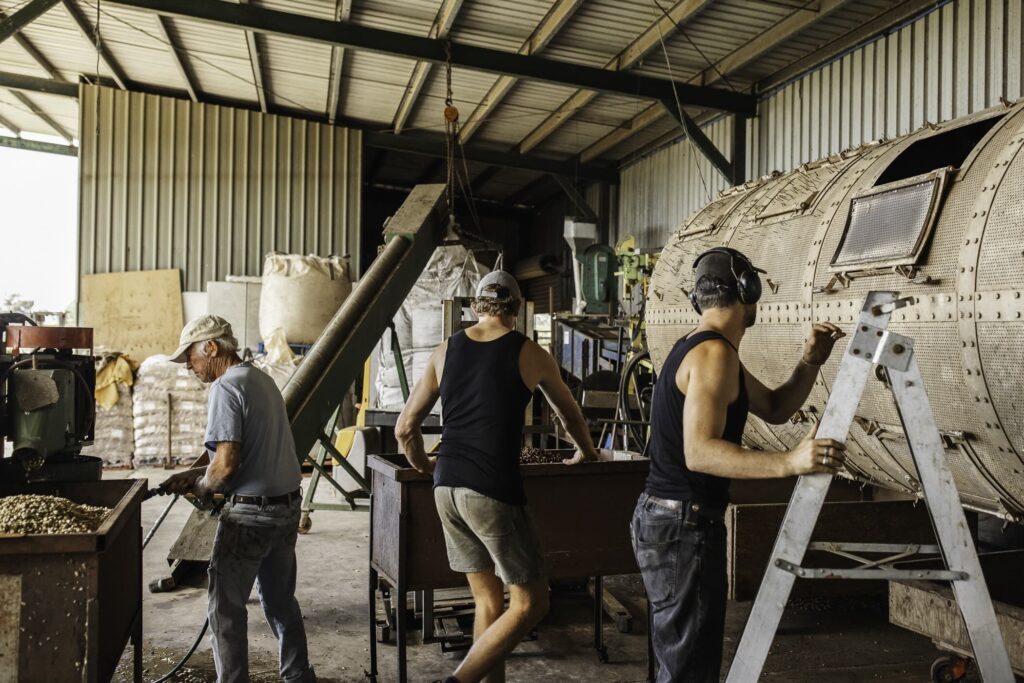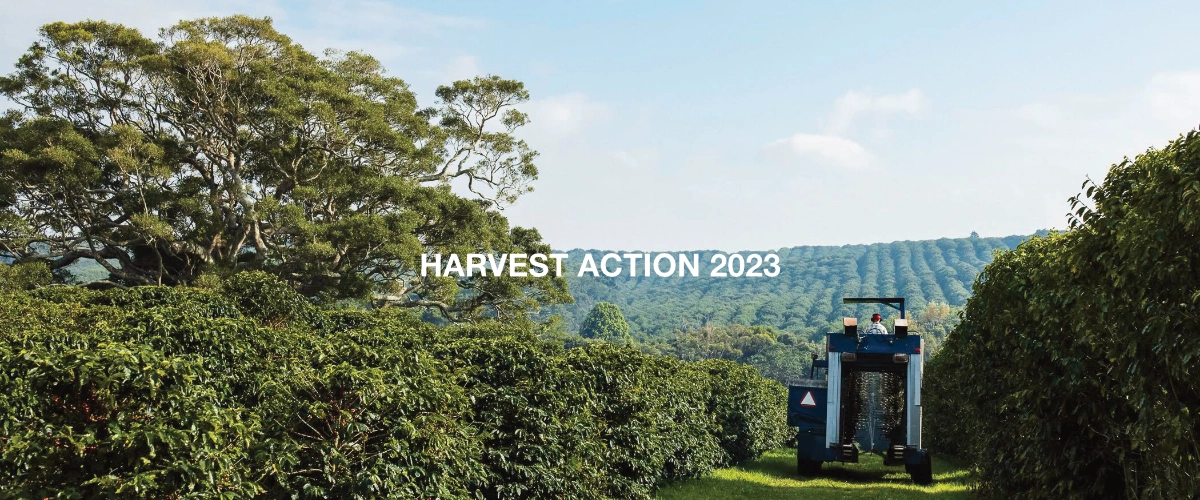This BLOG – will cover the spring harvest and processing action.
We’ll take a dive into the processing shed and share how your coffee gets transformed – both as washed and as naturals. Wish us well for a good harvest season – as Australian coffee drinkers .. you need us!
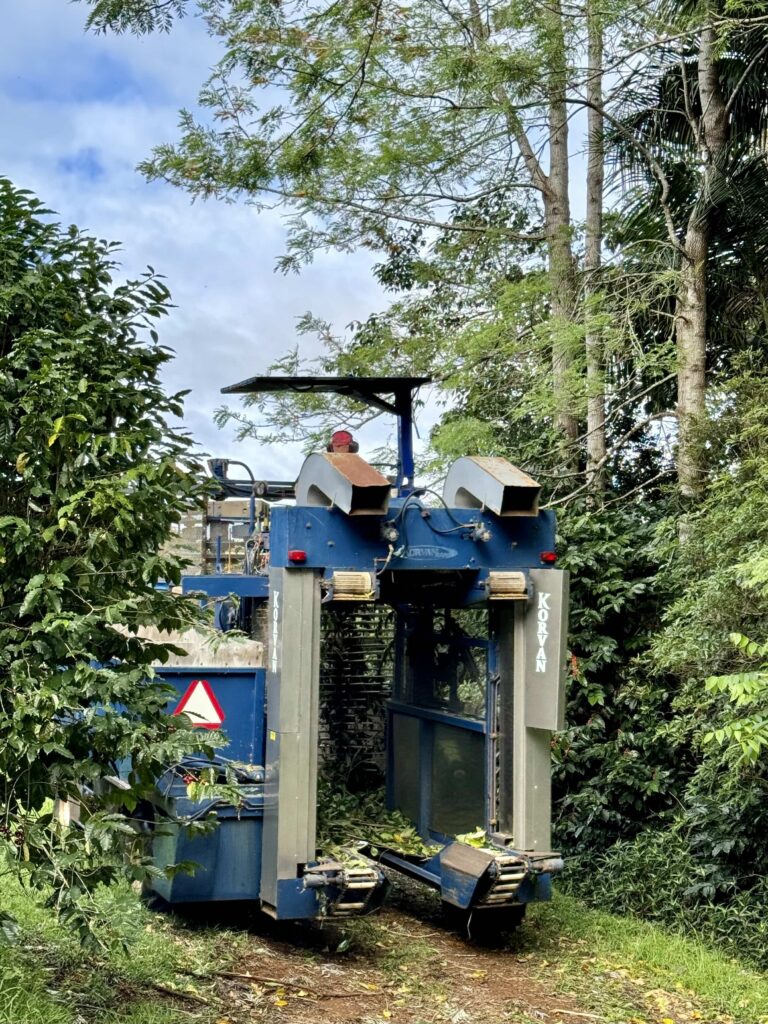
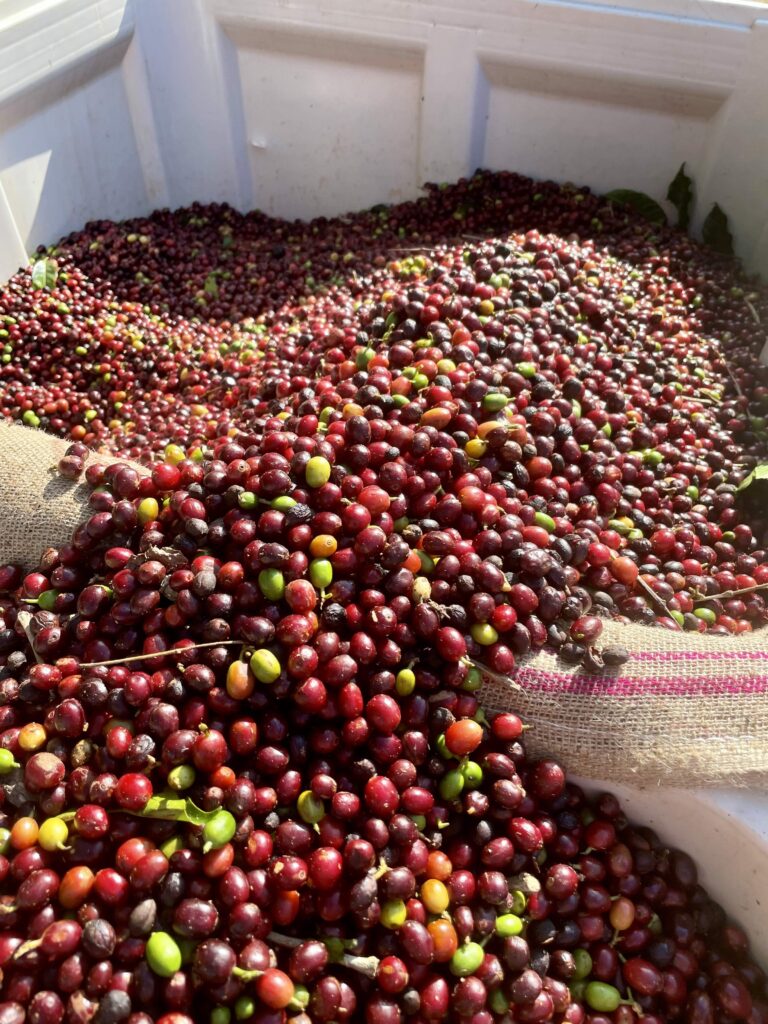
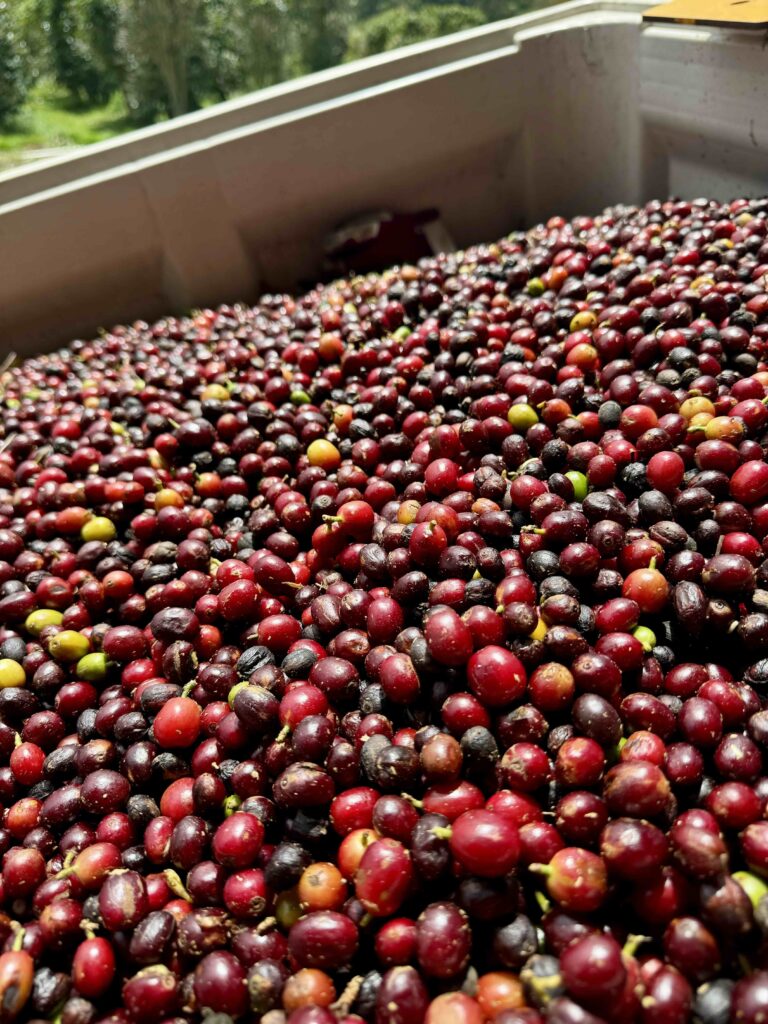
What’s the 2 processes we do with the ripe fruit? Naturals and Washed.
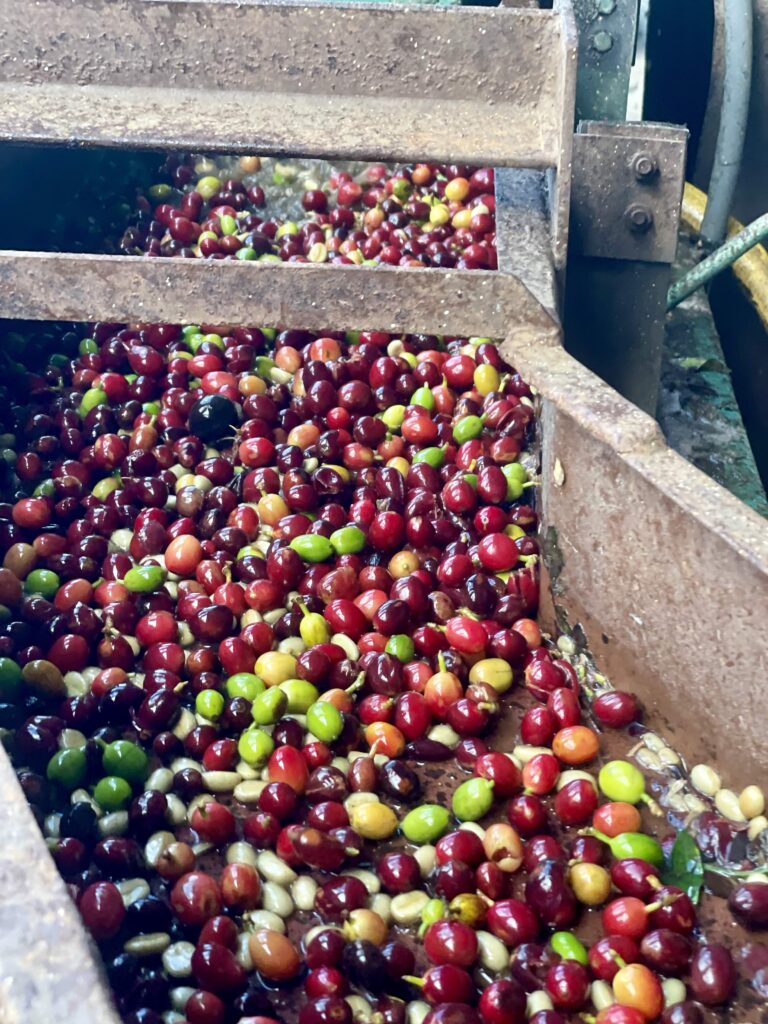
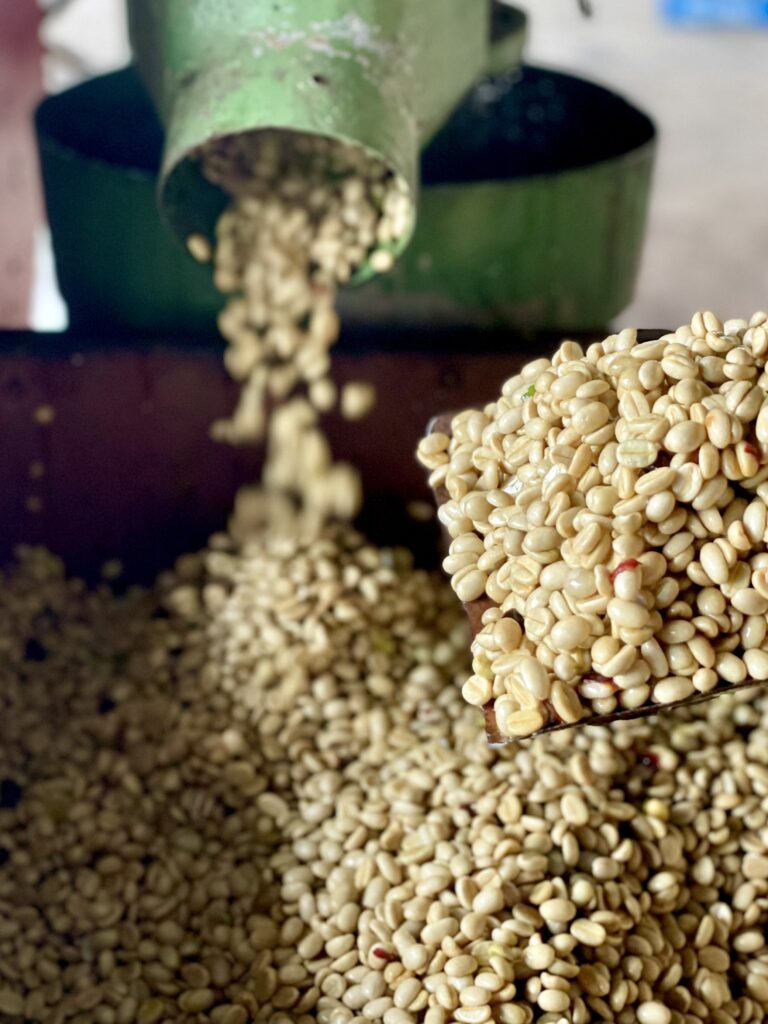
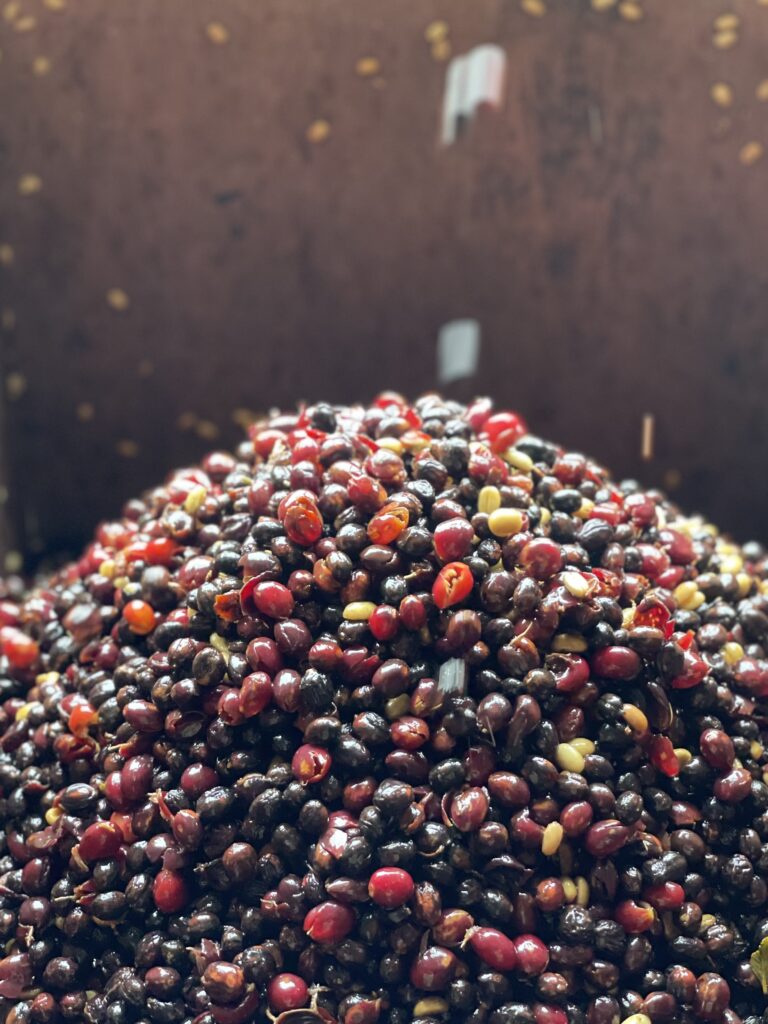
Most of the coffee fruit will be harvested as ripe red cherry, ready for the ‘washed process’. The bins of ripe red fruit come in from the field, poured into the hopper, sorted through the water bath, separated from the raisin-like, tree dried naturals or unripe greens; then pulped of their skins, loaded into the dryer and spun slowly over 2 days to become ‘parchment coffee’. The green bean/ raw coffee bean is safely locked within its dried papery shell, and stored this way in bags, ready to be hulled as needed in batches through the next year.
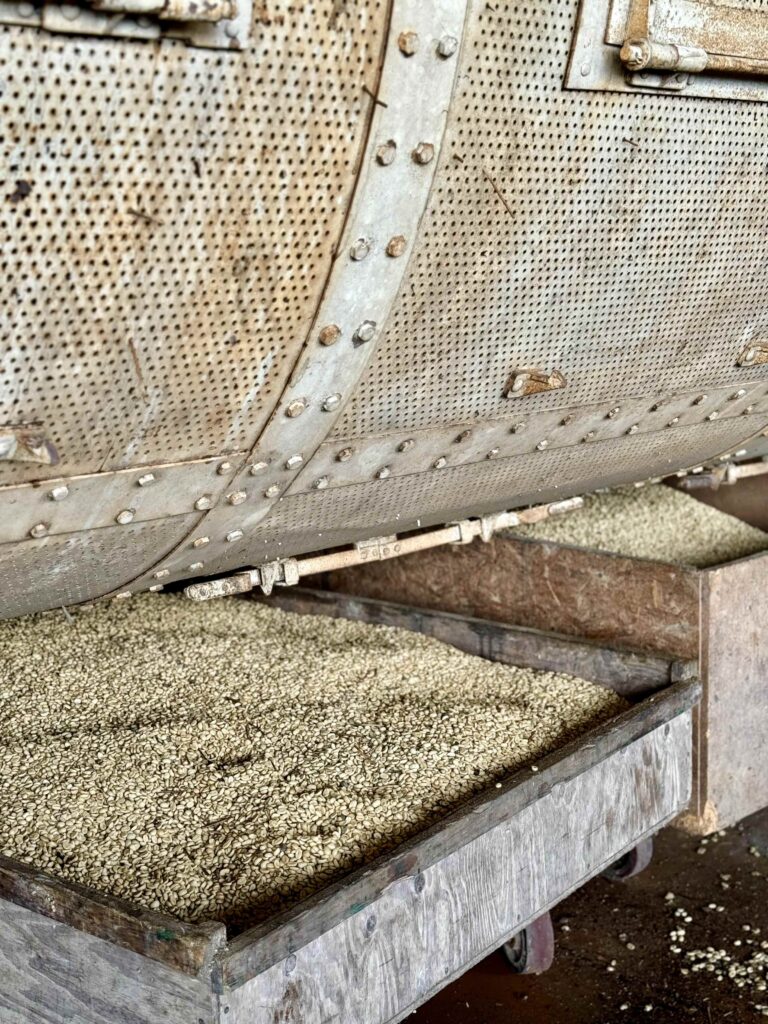
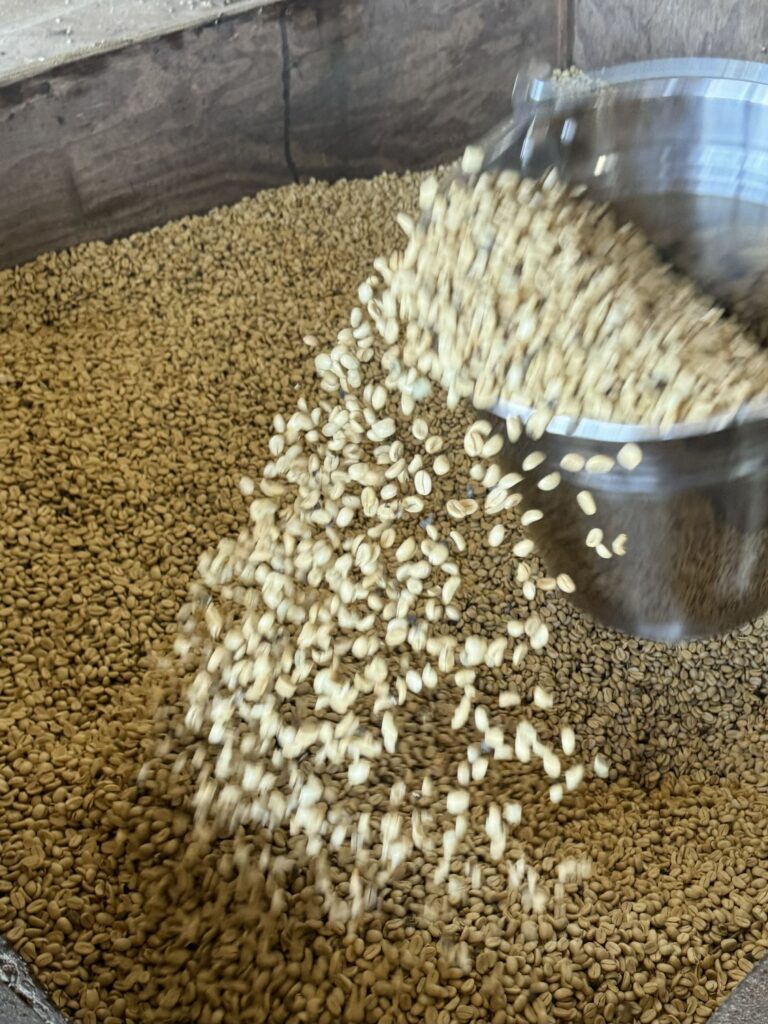
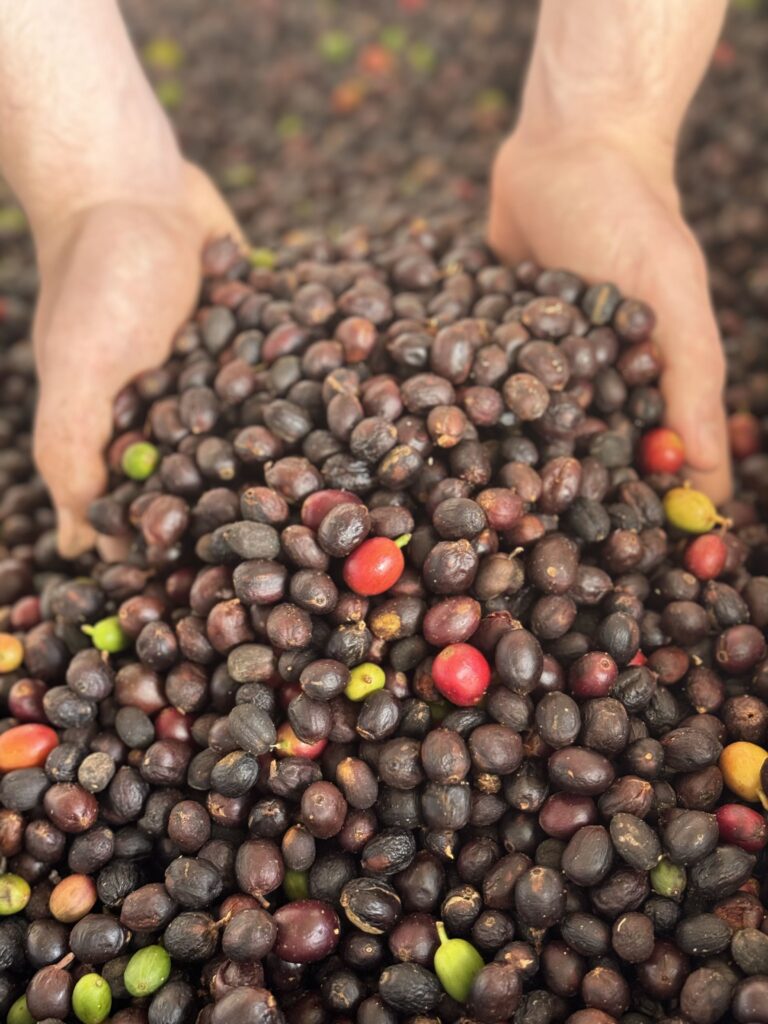
As the fruit further ripens beyond ‘prime red cherry’ on the tree, they become ’naturals’ – naturally drying on the tree, starting to shrivel rather like a plum becomes a prune or grape becomes a saltana. As the water within the fruit evaporates, the flavours intensify, the bright fruit acidity drops, and more intense, spicier-winey warmer dried fruit notes develop. The shrivelled raisin-like fruit might not look so bright and shiny but these are precious too!
Depending on how the spring harvest season goes, both ripe and over ripe, semi dried fruit are picked on the same day, so will start the process together. The field bins of fruit that have been filled from the harvestor are taken to the processing shed, tipped into the in-ground hopper, which augers up the coffee fruit into the water sorting bath on our wet processing line on the day of harvest. Some prime red fruit will sort itself into the line along with the tree dried fruit. So they will end up becoming ‘naturals’, drying together in our dryer. Most of the prime red fruit will enter their correct line that takes them up to the pulper. This machine squeezes the seeds from the skins – becoming ‘fully washed’ coffee. The coffee seeds pop out after going through the demucilage chamber, and the skins are pulped free and head off to the trailer, to add their moisture laden green goodness to our compost pile.
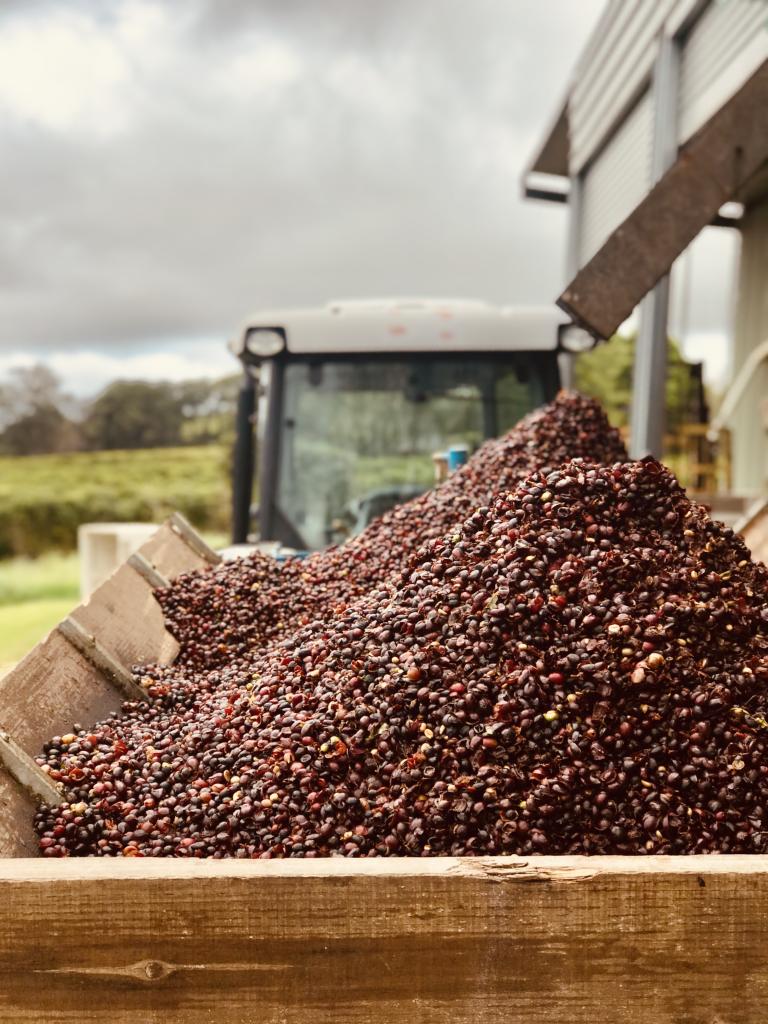
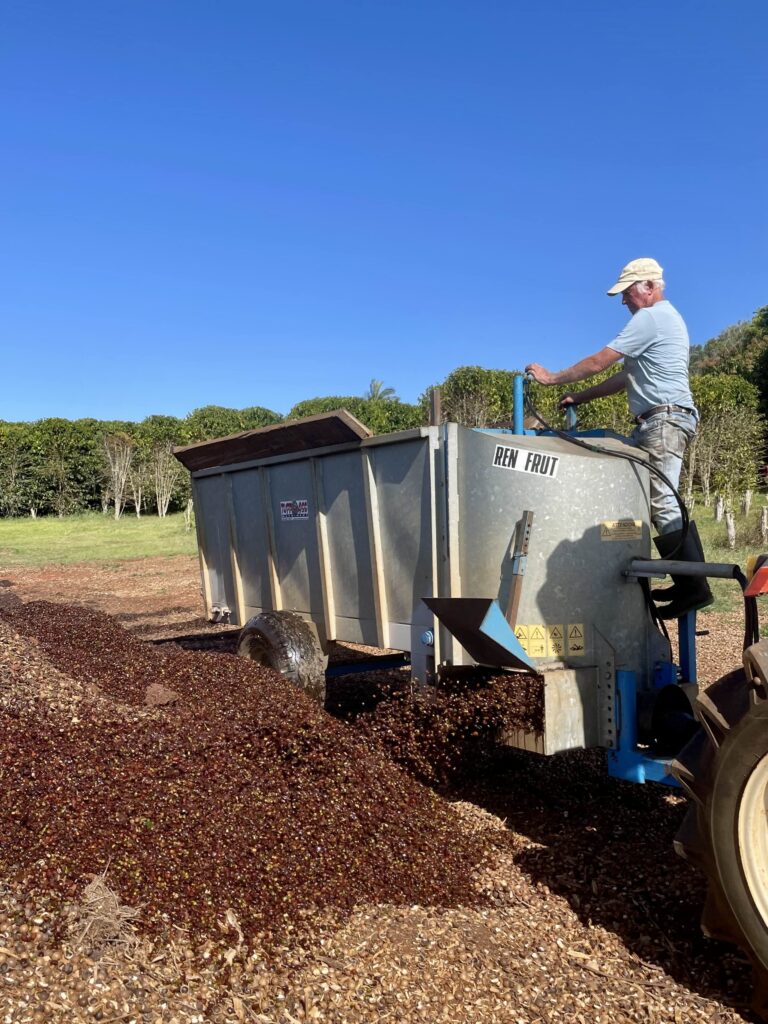
The natural, semi-dried fruit will go through the first water bath, but then get separated by flotation to not go through the pulper. Each batch of coffee will be finished off, slowly turning in the dryer which is intermittently heated at 35-40 degrees for 2 days, till the right moisture level, 11-11.5% is measured. They will then leave the dryer, tipped into wooden hoppers, and hand bucketed into the augur that will take the dried ‘naturals’ (dried within their fruit skins) up to a height to be dropped into big sacks. This is done the same way, for the pulped-washed and dried ‘parchment’ coffee. ie Kept separate in their own bags. After waiting 3 months for further flavour development, the naturals can be hulled and sorted – ready for roasting and blending into our beloved, and quite rare Zero Mile and Reserve 01 blends. Similarly, the washed – now called ‘parchment’ coffee, will be stored for at least 3 months before being hulled and size graded, ready for roasting.
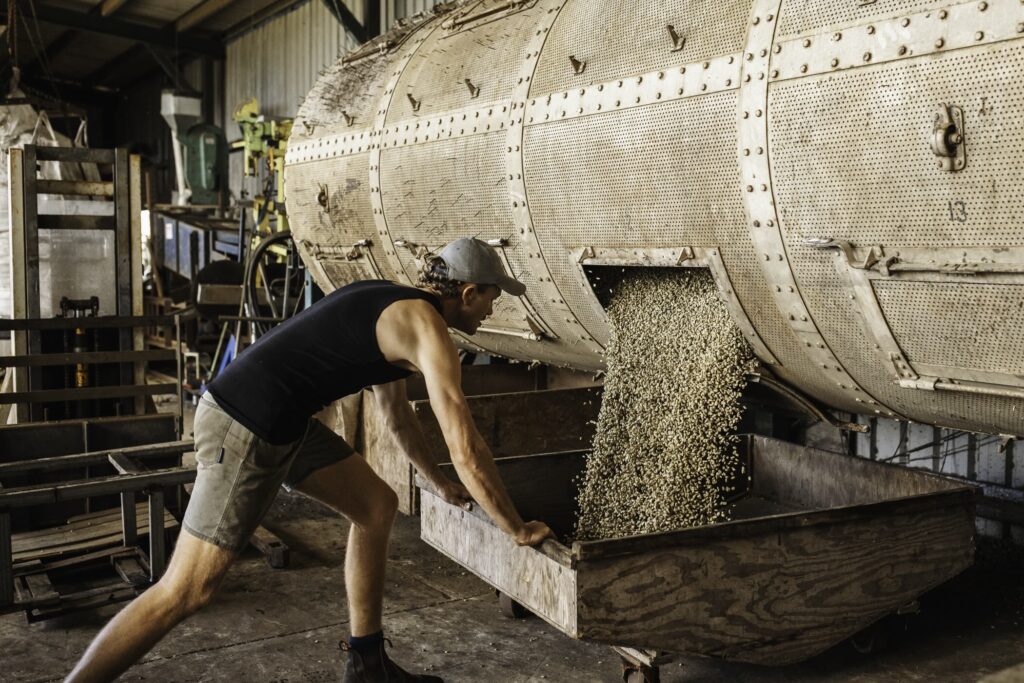
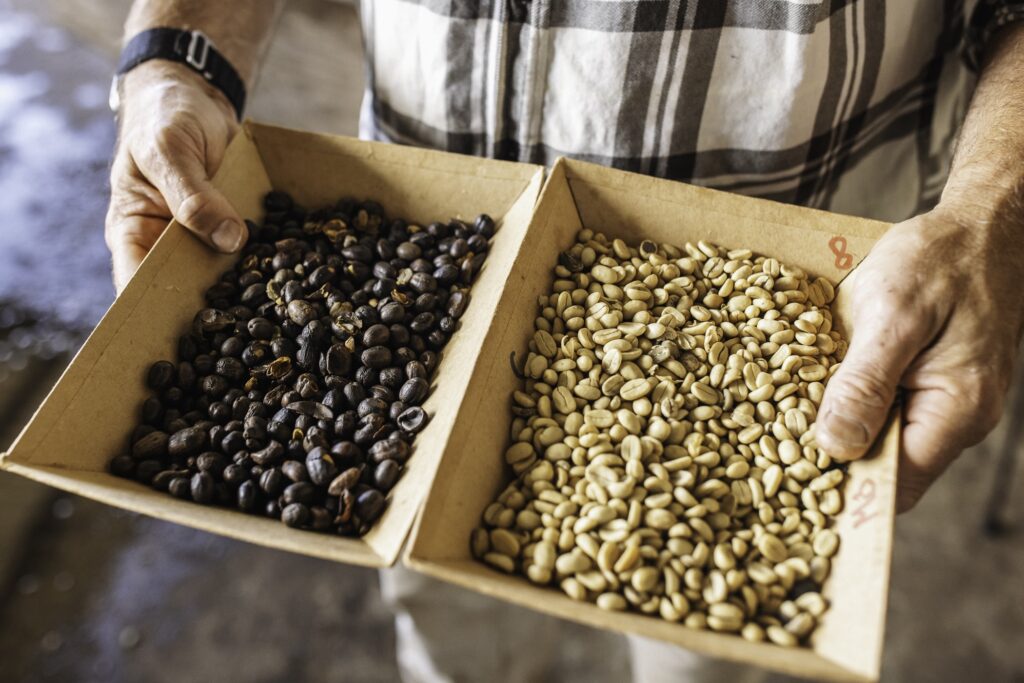
In the washed process, the sticky fruit juice and flesh around each seed is removed to some degree through our demucilage chamber, before we transfer the batches by hand bucketing into the dryer. Which is hard yakka as these wet coffee beans are quite heavy with water.
We could encourage further natural fermentation occurring- worthy of some experiment in small batches. This will actually be done as a research project this harvest season. We allowed a good sample lot of wet processed coffee to specialist fermentation researchers from the School of Agriculture, Food & Wine from the University of Adelaide, in the last few days of writing this blog. The results of the fermentation trials and taste outcomes will be shared with our industry body https://www.agca.au and through Bec’s blogs in 2024.
If the fruit is left in water over night, they will start to naturally ferment with microbial life breaking down the sugary fruit. Pulping the fruit the next day, and reusing that same water for another batch of fruit .. allows the natural fermentation to occur more quickly. But variably! So not something we choose to do on our full-harvest load days. Experimenting with fermentation is something that can be done in small lots, keeping the batches separate at all times, right through to hulling and grading a few months later. Not so easy to implement with our full sized farm processing equipment we have invested in. Like small batch roasting, it’s small batch farm processing and you need (yes you guessed it) small equipment, more bins and the skills and interest to be bothered ~ plus the space and time to work on such, over quite a few months. Keeping the batches well recorded and separated along the way. Could this make a difference in the cup for a micro lot? For sure. What will the extra fermentation time add to flavour profile and how consistent will it be? We find batches of cherry vary from prime red to dark, raisin like through the season. If we ever leave a batch of fruit in skins overnight, natural fermentation will occur too.These are just some of the ways the profile of our fruit can change seasonally, and within the harvest weeks. To have batch controlled by the bucketful is tricky, yet intriguing and I am very keen to hear from the researchers in time.
Speaking of bucketfulls, I spent quite a few hours on these recent harvest days hand picking fruit left on the trees after John had gone through on the machine. I hate seeing fruit left on! And every bean counts, it being so rare and in demand.
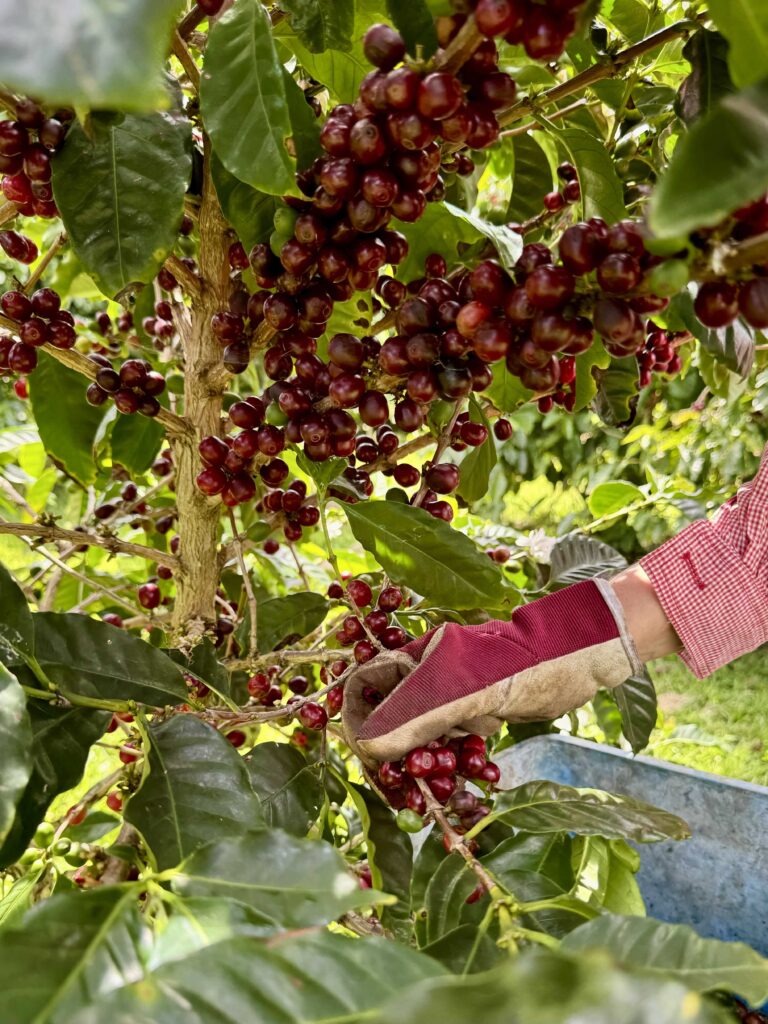
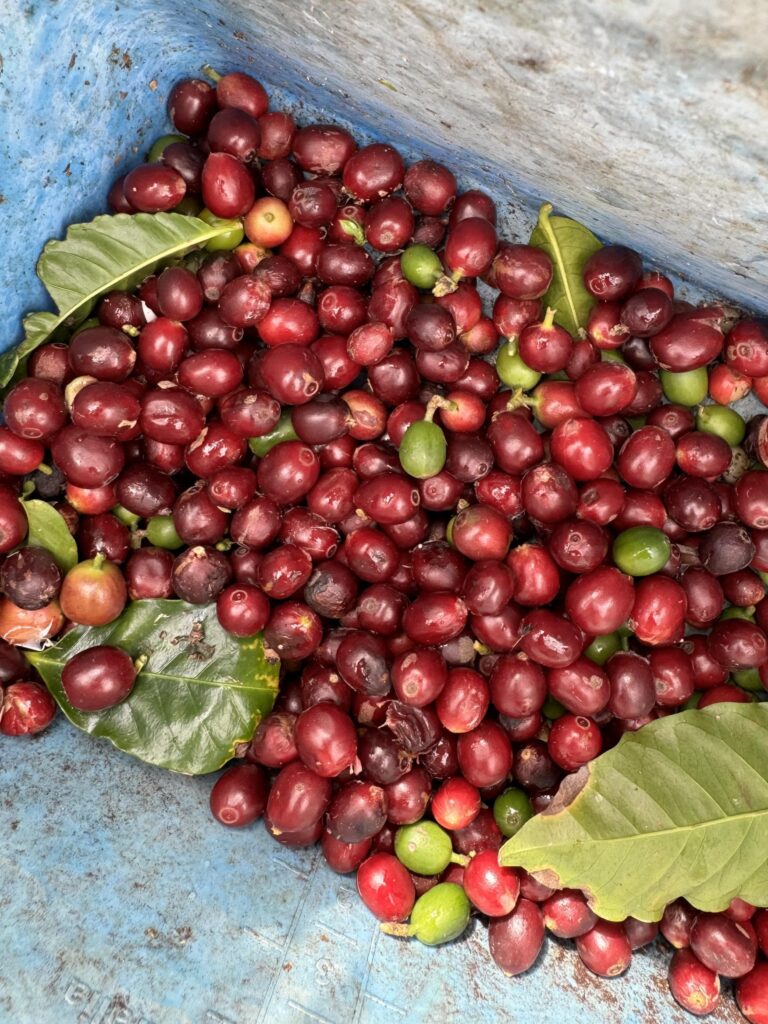
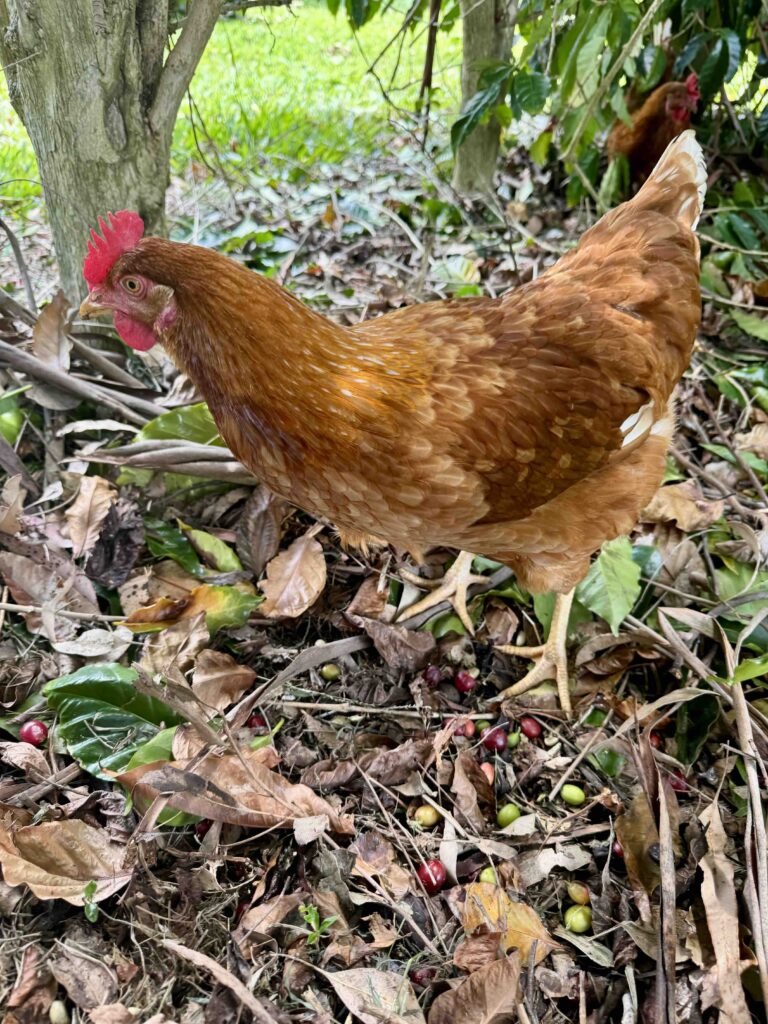
But hand harvesting is also proper hard yakka, bending down or reaching up in the sun, going as fast you can for very little return in the bucket. Hardly worth it for the effort. Our son Willem was on holidays from Hobart, so I roped him in for, gee, no more than an hour .. but grateful he popped back in for some farm work all the same 😇🥰. Willem happened to be here when we had a photographer visit, so here’s a couple of snapshots of the Z coffee family, on the second last harvest day of the season.
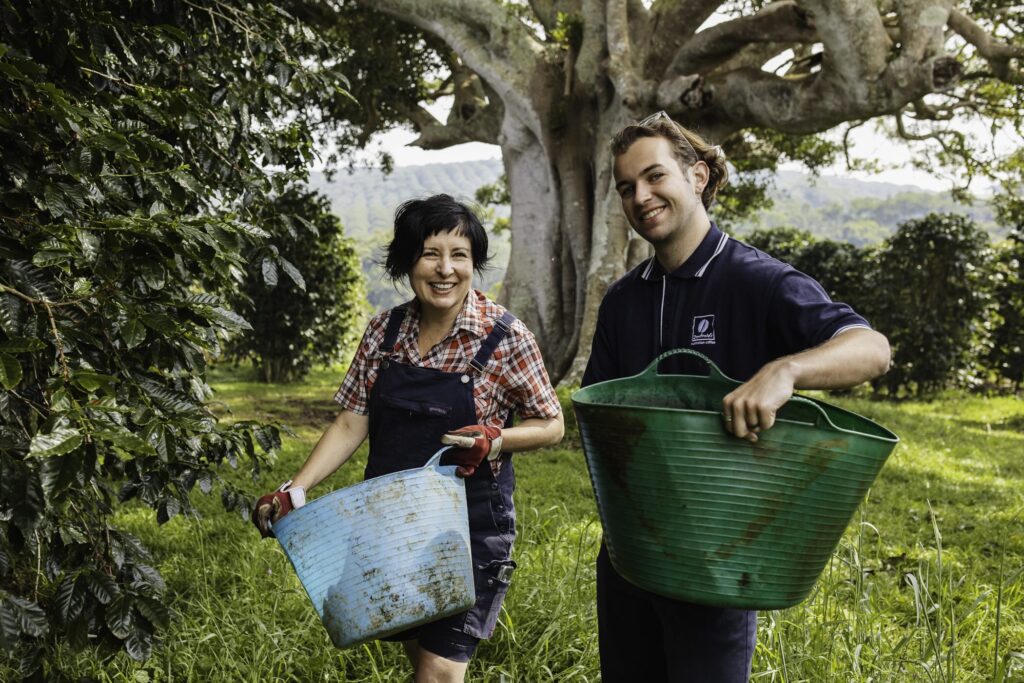
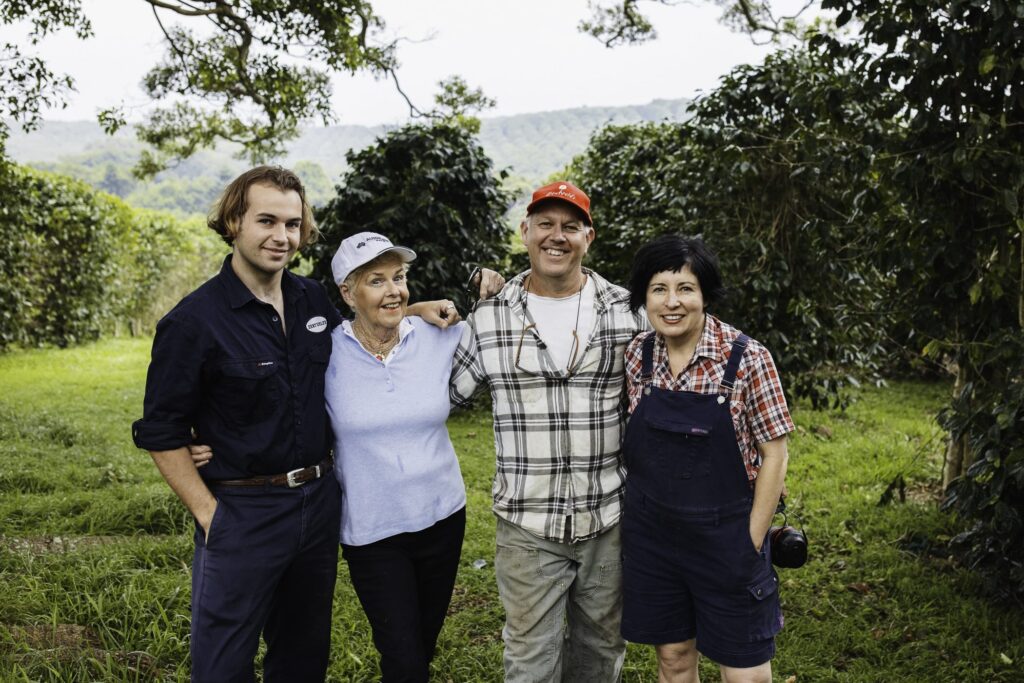
The most important time of the year is here! So cheers to our Guys ( & June!!) working hard to produce our finest Australian grown and processed coffee!
